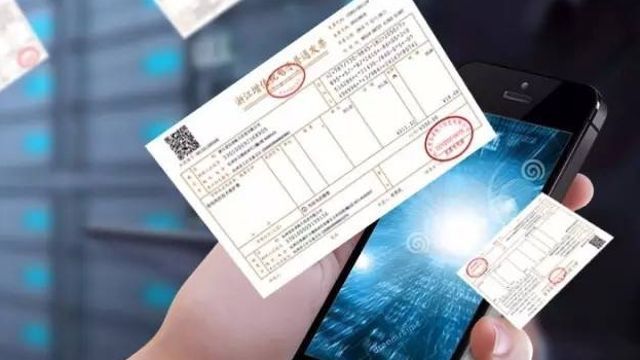
If you are familiar with business operations in China, you have probably come across the term ‘fapiao’, which directly translates to ‘invoice’ in Chinese. While this may seem straightforward enough, China’s fapiao system has significant implications for foreign-invested businesses in China. In this blog, we address the different types of fapiaos that a business can issue, and the methods to issue them.
China’s Golden Tax System
The invoice system in China is very much different from the rest of the world. China has established what is known as the ‘Golden Tax System Phase III.’ This has enabled a smooth transition into nationwide online tax registration and declaration. For every transaction that is made in China, a fapiao needs to be issued through this tax system.
What is Fapiao & Why Does it Matter?
Fapiao is essentially a legal receipt issued in China that serves as proof of purchase for goods and services. It is a part of the supporting documentation for business transactions and business expense claims. Hence, it has become an essential part of China’s tax law and is used by the government to deter tax evasion and compel companies to pay tax.
General Fapiao vs Value-Added Tax (VAT) Fapiao
There are two main types of fapiao: general fapiao and value-added tax (VAT) fapiao. Let’s take a look at the differences between them.
General fapiao is issued in the event of the purchase or employment of tax-free services or VAT registered operations. The primary purpose of a general fapiao is to provide evidence of a payment or transaction. A general fapiao is much simpler to issue than a special VAT fapiao, and as such is primarily issued by small-scale taxpayers or enterprises.
In contrast, value-added (VAT) fapiao, is usually issued by general commercial taxpayers who sell cigarettes, alcohol, food, and so on for tax deduction purposes. This fapiao is issued to customers when selling goods or providing taxable services. Special VAT fapiao cannot be issued for the sale of tax-free commodities. Compared to general fapiao, VAT fapiao is much more complex and requires more details about the vendor involved in the transaction. There are 3 copies generated when a VAT fapiao is produced:
- Bookkeeping copy – a bookkeeping voucher for the issuer
- Deduction copy – a tax deduction voucher for the customer that made the purchase
- Invoice copy – a bookkeeping voucher for the customer
Key Differences Between General Fapiao & Special VAT Fapiao
To help you better understand the differences between general fapiao and VAT fapiao, we summarise their features in the table below.
|
General Fapiao |
VAT Fapiao |
|
|
Main purpose |
Proof of purchase for accounting and tax compliance purposes |
VAT fapiao can be used for tax deduction services |
|
Printing requirements |
Printed by enterprises designated by the local tax bureau |
Printed by enterprises designated by the relevant tax department under the State Council |
|
Contents |
Less detailed compared to VAT fapiao. It only includes the following information:
|
More detailed; in addition to contents of a general fapiao, VAT fapiao must provide the following:
|
Different Types of Fapiao: Machine-Printed Fapiao vs E-fapiao
Sellers can produce fapiaos in different forms. Two of the most common types are the traditional machine-printed fapiaos and the newer e-fapiao.
Machine-printed Fapiao (机打发票)
A traditional machine-printed fapiao is printed on a small machine using special paper issued by the local tax bureau. This method can produce both general and VAT fapiaos.
How To Purchase Fapiao
In order to actually buy the printer and fapiao paper, you must meet the following requirements:
- Your company will have to be granted general taxpayer status from local tax authorities. Only then will you be able to purchase a computer and fapiao printer from a registered seller.
- The tax bureau will then install the tax software and a device inside the computer to verify whether the printer has the correct fapiao quotas. Only then will you be able to generate your machine-printed fapiaos.
- Only trained staff are allowed to handle fapiao. Training courses can be undertaken at the local tax office.
Most fapiaos for significant B2B transactions are machine printed these days. It usually contains the following information:
- Date;
- A brief description of the expense in Chinese, for example, service fee or consulting fee;
- Invoice (fapiao) chop – this is mandatory for issuing official invoices and to declare a purchase as a business expense.
E-fapiao
E-fapiao (electronic fapiao) is a newer form of fapiao and is quickly gaining popularity in China. In fact, as of January 1st 2020, Qianhai district of Shenzhen city declared the digitalization of all normal VAT fapiaos. Below are some of the benefits of electric fapiaos:
- No printing ink needed for electronic invoices – reduced cost of invoices
- Simplified procedure to generate fapiaos – no need to travel to and from the tax authorities to obtain fapiao printing paper.
- Invoice data is uploaded to the tax authority in real-time – the tax authority can keep track of the taxpayer's invoice status, count, analyse, and inquire about the invoice data to strengthen tax collection and invoice management. China’s emergence of cloud accounting software such as Megi cloud accounting has made it easier for companies to track fapiaos with greater efficiency and accuracy.
However, one of the key disadvantages is that only a general fapiao can be produced as an e-fapiao, which means it cannot be used to write off taxes.
Key Differences Between Machine-Printed Fapiao vs E-fapiao
By understanding the benefits and drawbacks of machine-printed fapiao and electronic fapiao, you can determine which method is best for your company:
|
Machine-printed Fapiao |
E-fapiao |
|
|
Benefits |
|
|
|
Drawbacks |
|
|
How To Proceed With Fapiao in China
For a foreign entity in China, the Golden Tax System can be quite complex. We would strongly advise that your business should thoroughly understand how to manage fapiao-related paperwork. If carried out correctly, it can add another layer of credibility to your transactions and your quota for foreign staff work permit applications may increase in the future – which is definitely a huge benefit!
It is also recommended that foreign entities employ a local financial specialist that is experienced in operating within this system and is familiar with all the related rules. Our experienced specialists at Hongda can handle your daily and monthly accounting, keeping you compliant and lowering tax where possible.




